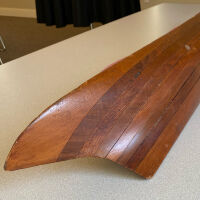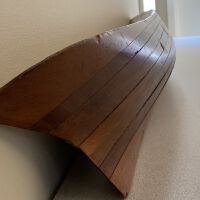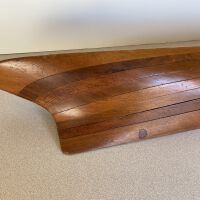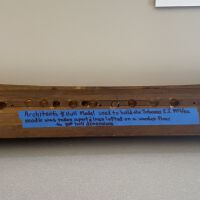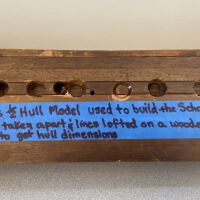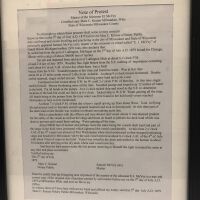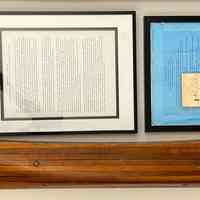Half hull model, E.J. McVea
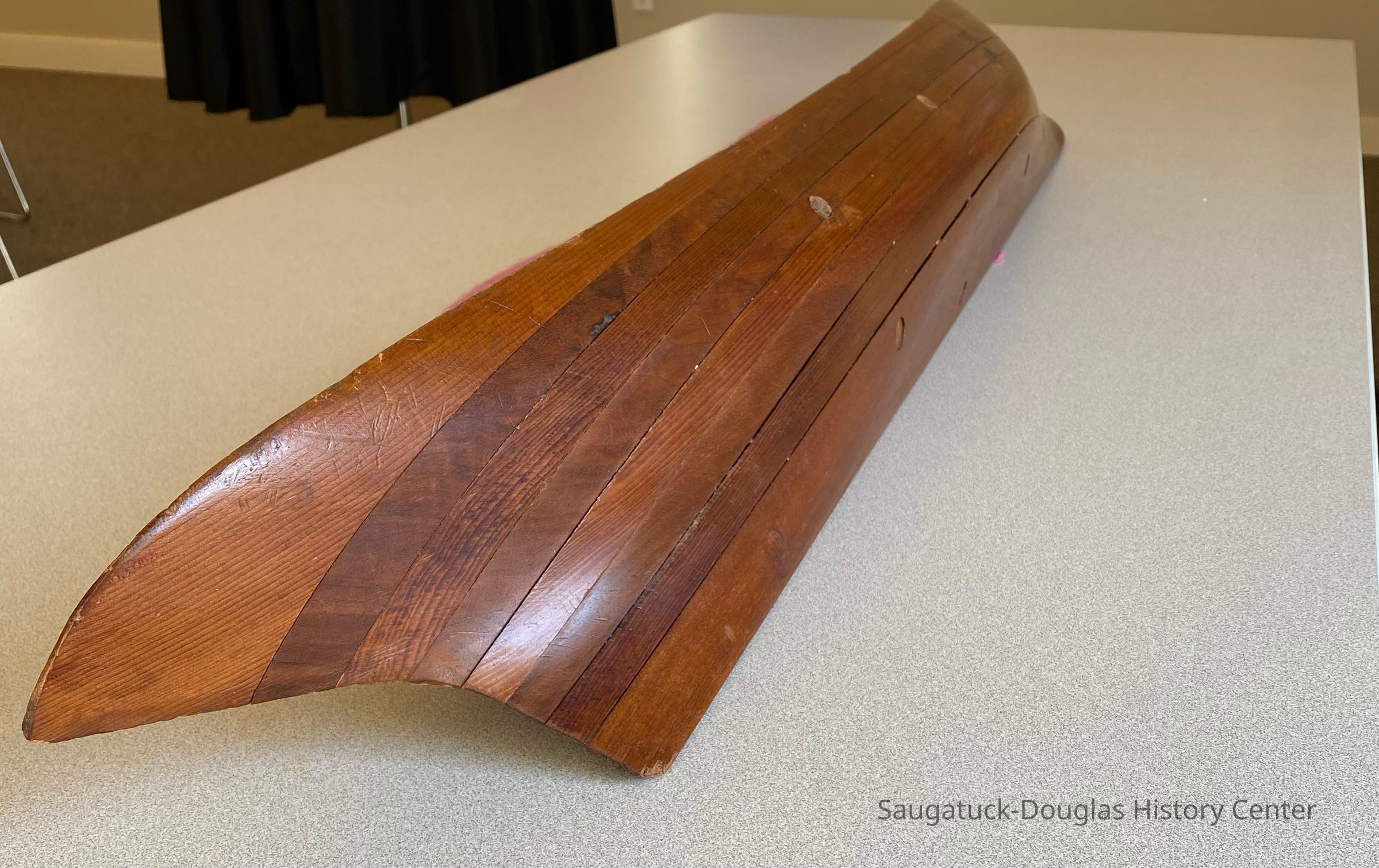
2022.80.02
Schooner E. J. McVea By Alan Anderson for The Sampler published by Sombra Township Museum March 2016 The E. J. McVea was one of thousands of wooden sailing vessels built at the many ship yards that dotted the Great Lakes during the 1800's. Wood was a cheap and available resource to create sailing ships that provided inexpensive transportation of goods all over the same Great Lakes. The McVea, as a ship, was nothing really unique. Built in 1873 by Jacobsen and Co. in Allegan, Michigan, she was a three masted sailing vessel 140 feet long, with a beam of 26 feet and a shallow draft of only 10 feet. This shallow draft and a single centre board allowed her to reach many ports of call on Lakes Huron, Michigan and Superior. She was built with a "plumb bow" or a Great Lakes bow. The waves on the Lakes being short and steep lend themselves to this type of bow; a more curved bow tends to ride up and pound on these waves The McVea's career saw her grow old as a victim of progress and eventually die an explosive death. For 17 years she sailed the Great Lakes and was an independent, sturdy, dependable delivery vessel. In 1878 she was the subject of a media mystery. News papers in the US reported that the McVea was lost with all hands somewhere on the Great Lakes. This caused great concern and anquish for people all around the Great Lakes. The only people unconcerned were the crew and Captain Sam McVea, who were all safely settled into their winter homes. The McVea was safely tied up for the winter in Goderich rather than her usual winter berth of Chicago, due to an early setting in of ice that year. This was certainly a case of communication breakdown. The shipping industry had evolved and steam powered vessels replaced the old, dependable but slow sailing vessels. What to do with these still seaworthing but now obsolete sailing vessels? Many were turned into tow barges. Their power now came from a steam barge not the wind. In 1890 The McVea was sold to Matt Sicken of Marine City, Michigan who in 1884 had built a steam barge called the M. Sicken. The Sickens were large lumber dealers with factories in both Marine City and Sombra. The M. Sicken towed the McVea and usually another tow barge all over Lake Huron until 1902 when she was sold to a Canadian shipping company were she performed the same duties. Mother time began to take its toll on the McVea and she became a shipping liability. In 1919 she was sold to W.W. Stover of Sombra who used her as a storage vessel along the "Hay Dock" in Sombra Village. The Hay Dock would eventually become what is now the Federal Dock in Sombra which is now the home to the International Auto Ferries Daldean and Ontamich. It was while in Sombra, that the McVea performed her most unique and historic tasks. The St. Clair River was witness to a great deal of trafficking in booze during American Prohibition. All along the length of the river were beer scows. This was simply a term to describe a point were the booze was stored and loaded for its fast trip to "Cuba" via the American shore just less than a kilometer away. The McVea was one of the only beer scows that was actually a scow. After prohibition ended, the McVea lay lifeless along the Hay Dock with no hope of revival. In 1940 the Hay Dock was revamped and rebuilt to house the new ferry landing. The question, what to do with the McVea? It could not safely be towed away to another sight as it was no longer sea worthy. The solution, dynamite. The McVea was blow up in a controlled explosion where she lay Problem solved. Today a scuba diver or snorkeler can still find remanents of the McVea nested on the river bottom on the south side of the Sombra Ferry Dock.
Slusar, Linda
2022.80
SchoonerGreat Lakes sailing ships
5 in
40 in
3 in
Sec 4E Shelf S15
Good
Charles McVea (ship) 1888-1928McVea, Charles E. 1835-1894
11/13/2022
08/26/2025

